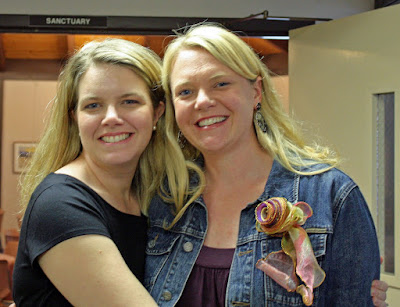
Yeah, the paper towels say "Home Sweet Home." On every towel. But it's not perfectly aligned to be centered on each towel, so here and there a towel says "Home Sweet" along the bottom. When I saw these Home Sweet Home paper towels, I had to pause and go, "Hmm." So let's take a moment. These paper towels are, of course, referencing a work of handmade needlepoint. Like this one, from the 1880's.
 These later Victorian needlepoint pictures were often worked onto paper patterns, as this one is (sorry for the tiny pic). The paper patterns were mass-published, but would be hand-embroidered at home by women and girls. This is well after the heyday of girls creating "samplers" to show that they'd crossed the threshold of competence with a needle. You've seen those--they would usually have the entire alphabet and each numeral. Also a little picture of the girl's house was typical, or the floral motifs that she knew how to do, and her name and the date.
These later Victorian needlepoint pictures were often worked onto paper patterns, as this one is (sorry for the tiny pic). The paper patterns were mass-published, but would be hand-embroidered at home by women and girls. This is well after the heyday of girls creating "samplers" to show that they'd crossed the threshold of competence with a needle. You've seen those--they would usually have the entire alphabet and each numeral. Also a little picture of the girl's house was typical, or the floral motifs that she knew how to do, and her name and the date.
 Such a sampling of her abilities was a way for a girl to prove that she was on her way to being an accomplished and eligible (marriageable) woman. Some of them are much, much fancier. Some samplers are also genealogical records--the girl would embroider a family tree. Truly, major works of art, but even a simple sampler is literally one-of-a-kind.
Such a sampling of her abilities was a way for a girl to prove that she was on her way to being an accomplished and eligible (marriageable) woman. Some of them are much, much fancier. Some samplers are also genealogical records--the girl would embroider a family tree. Truly, major works of art, but even a simple sampler is literally one-of-a-kind.

 That dark one is from 1786. In the 16th and 17th centuries, and even well into the 18th in colonial America, most girls were not "literate," in the technical sense, meaning that they could not compose and write with a pen. They might have been taught to read in little house schools, called "dame schools," but for centuries, being taught to read and being taught to write were completely separate things. Therefore, many, many girls could make letters and words with a needle, but were not able or were not in the habit of writing the "real" way. Or, they learned to write long after they learned to embroider. Needlepoint was their writing. So the samplers and works of needlepoint that have survived from those days make up a real women's textual history, a kind of alternative tradition --historical documents that happen to be outside the covers of books. It totally rocks.
That dark one is from 1786. In the 16th and 17th centuries, and even well into the 18th in colonial America, most girls were not "literate," in the technical sense, meaning that they could not compose and write with a pen. They might have been taught to read in little house schools, called "dame schools," but for centuries, being taught to read and being taught to write were completely separate things. Therefore, many, many girls could make letters and words with a needle, but were not able or were not in the habit of writing the "real" way. Or, they learned to write long after they learned to embroider. Needlepoint was their writing. So the samplers and works of needlepoint that have survived from those days make up a real women's textual history, a kind of alternative tradition --historical documents that happen to be outside the covers of books. It totally rocks.
So what was the cultural, cognitive, or industrial design process by which "Home Sweet Home" came to be printed on those paper towels? I mean, really, what was the thinking there, if there was any identifiable human thought at any point in the chain? Was it as simple as, "Here's a homey motif to make people feel cozy about this roll of paper?" Like they're just words, totally cut off from any real history, and floating free, ready to be re-valued as a way to "decorate" disposable paper products.
I ask you, is this not weird? It's way more bizarre than cereal shaped like vampires, or whatever grocery store monstrosity you can think of. The "Home Sweet Home" paper towels repeat those words 150 times or so, each sheet intended to be torn off, used, and thrown away. Whoever designed these meant them to be blandly cheery (or cheerily bland?) but they actually forcibly remind us of the alienating and non-human aspects of mass production and consumption. And they really bug the crap out of me. Those paper towels hijack and deface a real, rich history. Like, it's come to this?
Not to get all super serious. Was I raving?
 I swear, I am this close to busting out Walter Benjamin's The Work of Art in the Age of Mechanical Reproduction, because it might help us crack this nut, but I will spare you. For now.
I swear, I am this close to busting out Walter Benjamin's The Work of Art in the Age of Mechanical Reproduction, because it might help us crack this nut, but I will spare you. For now.
Anything bugging anybody else?



























